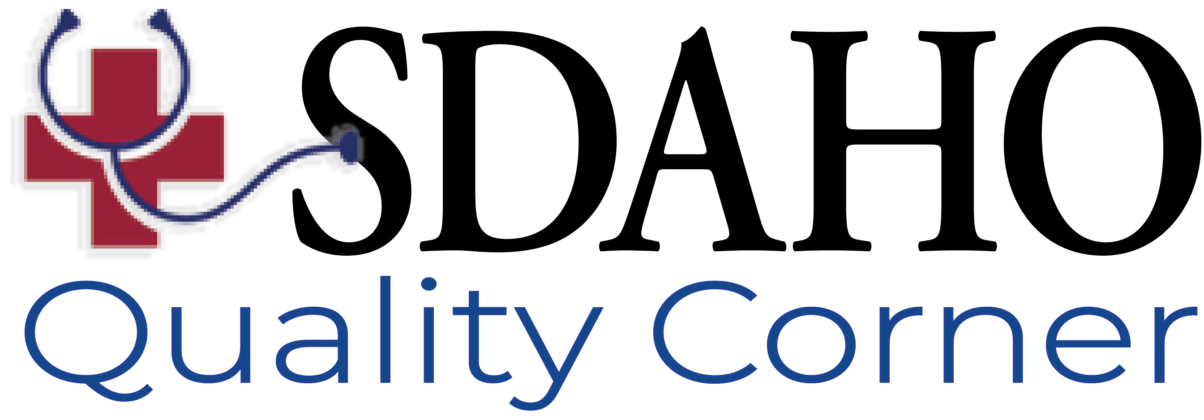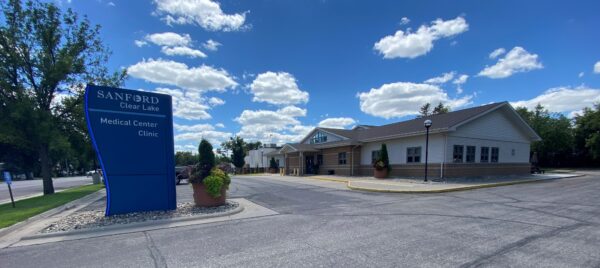The South Dakota Association of Healthcare Organizations (SDAHO) is excited to lift up member facility, Sanford Clear Lake Medical Center as they are featured as the September Spotlight in the Compass Navigator. The Compass Navigator is a monthly communication publication by the Compass Network, a four state partnership between Iowa, Nebraska, South Dakota and Mississippi. The Compass Network participates in the Center for Medicare and Medicaid Services (CMS) Hospital Quality Improvement Contractor (HQIC) program, which began in 2020 and extends through September of 2024. Sanford Clear Lake Medical Center was chosen to be featured from their quality improvement project that was submitted during SDAHO’s Quality contest that was held during Quality Week in October of 2021. In addition to details about their project, Sanford Clear Lake Medical Center has also shared the auditing tool that was developed and used. SDAHO is pleased to partner with Sanford Clear Lake Medical Center in improving the lives of South Dakotans, and we are thankful for their willingness to share their project with us.
Enjoy the original publication from Compass Navigator written by Haley Bouvette, RN, BSN with Sanford Clear Lake Medical Center:
Sanford Clear Lake Medical Center Starts Reporting on AMI Measures
Sanford Clear Lake Medical Center is a 10-bed critical access hospital located in eastern South Dakota in the Town of Clear Lake. Clear Lake is a farming/ranching community of about 1,500 people. Patient populations vary greatly; however, being located close to the interstate we have many traumas and other medical emergencies come to our facility.
At our small critical access hospital, our acute myocardial infarction (AMI) numbers are low, only averaging about 3 per year. However, with each case we learn something new, and we work on improving our quality of care in these low frequency, high risk situations. With the support from our administrative team, medical team, and nursing team we decided we could improve.
There are multiple AMI measures, but our facility focuses on two of the outpatient measures related to reperfusion therapy. “Patient’s receiving reperfusion therapy of fibrinolysis or percutaneous coronary intervention (PCI) have an in hospital mortality rate of 5% to 6%. Opposed to patients qualifying for reperfusion therapy, but do not receive it having an in hospital mortality rate of about 15%,” (Sweis & Jivan, 2022). AMI OP-2 measure evaluates if the patient received fibrinolytic therapy within 30 minutes of arriving to the emergency department (CMS, 2022). AMI OP-3 measure evaluates the median time to transfer to another facility for acute coronary intervention, with a goal of door-to-coronary intervention time of 120 minutes (CMS, 2022). Locally, our goal is to have an AMI patient transferred within 90 minutes of their arrival.
Initially, when starting to abstract AMI charts and report on AMI OP-2 and OP-3, the goals of these measures were reviewed with providers and nursing. After our first case, it was identified there were missing documentation pieces. More specifically, documentation regarding delays of any kind were not documented with enough detail. For example, it is not adequate to simply document “fibrinolytic held”. A more detailed explanation of “fibrinolytic on hold until CT is resulted to rule out a bleed” is needed. Documentation guidelines were reviewed with providers, and they found this helpful in how to document their train of thought to show their clinical judgement was in the best interest of the patient.
Awareness of the fibrinolytic administration goals and completing a computer-based training on fibrinolytic medications has given nursing staff the knowledge and confidence to ask about fibrinolytic medication sooner rather than later. Nursing is also encouraged to use our emergency telemedicine services to allow for expert consultations and for an expedient care transition to the most appropriate facility.
Quality personnel run monthly reports for AMIs. The AMI cases are then reviewed by the quality personnel. This includes a chart review and possibly interviews with staff involved. An auditing tool was developed locally, so all information needed for CMS reporting and local quality data analysis was all in one location. In addition to convenience, having a timeline of events can help identify opportunities for improvement and trends over time. Quality staff then abstract the chart and submit it in the CMS Hospital Quality Reporting system. A summary of events is organized and presented to administrative staff, medical staff and nursing staff at monthly meetings. This usually opens up the floor to some great discussions regarding staff experiences, barriers, and improvement ideas.
Overall, starting to report on something new can be overwhelming. However, it is helping us improve in an area that isn’t a regular occurrence for our facility. I would highly encourage other facilities to start monitoring and reporting a new measure. For it to go more smoothly, ensure research is complete on the topic, staff are informed, and involve the care team in decisions. This was and continues to be a learning experience for all involved.
Resources
Centers for Medicare & Medicaid Services. (2022) Hospital Outpatient Specifications Manuals. https://qualitynet.cms.gov/outpatient/specifications-manuals
Sweis, R. N., & Jivan, A. (2022, June). Acute Myocardial Infarction. Merck Manual Professional Version. https://www.merckmanuals.com/professional/cardiovascular-disorders/coronary-artery-disease/acute-myocardial-infarction-mi





